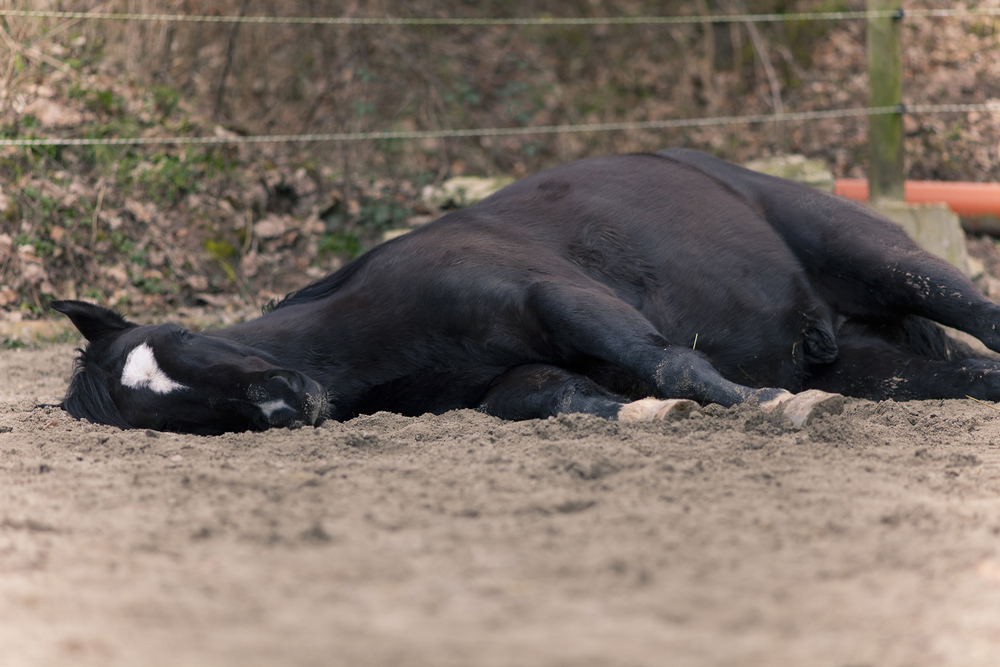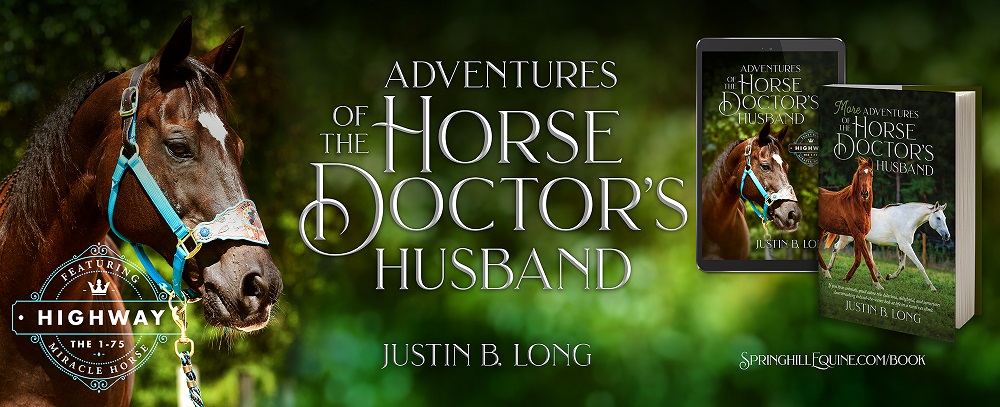Tuesdays with Tony
If you missed the first half of my blog on how to help your vet manage a colic, click here to read it first! Don’t worry, I’ll wait. Wake me up when you get back and we’ll go on to Part 2.
While Your Vet is Examining Your Horse
My doc may start by asking you some questions about what’s been going on, or, if your horse is really painful, she may need to start working on him immediately. A typical colic exam includes these things: a physical exam, passing a nasogastric tube through your horse’s nose and down into his stomach, an ultrasound of his abdomen, palpation per rectum to feel his internal organs, and bloodwork.
These are all pieces of the puzzle to determine what is causing the colic and how best to treat it. Some types of colic can be treated on the farm with pain control medications and laxatives. Some need to be brought into a hospital for IV fluids and more involved medical treatment, and some kinds of colic can’t be resolved without surgery. Listen carefully to what my doc tells you is going on and her instructions.
After the Vet Visit
- You’ll want to continue monitoring your horse frequently. Exactly how frequently will depend on what my doc finds – at least every few hours in a very mild case. Colic signs can worsen quickly, so you won’t want to miss anything. Yes, you may have to miss work or lose some sleep during the night. Trust me; as a cat, I know what I’m asking for on losing sleep. That’s how important this is.
- Check for manure production. You’ll want to keep your horse somewhere you can see when he passes a new pile of manure. Pick out a stall or a small paddock so you can tell new piles from old. Don’t turn him out in the back 40 where you’ll have no idea if he’s pooping enough.
- Follow my doc’s re-feeding instructions. This will probably mean a gradual reintroduction to feed to ensure the colic doesn’t start again. Yes, your horse will look at you like he is staaarving and you are cruel, but remember, it’s just tough love and it’s what is best for him.
The DON’Ts (and the NEVER EVERs in a million years)
- Don’t give your horse banamine without talking to my doc first. Banamine is a pain medication that will mask some signs of colic. This can make it hard for my doc to get an accurate assessment of the severity of the colic. Banamine can also have a toxic effect on the kidneys if your horse is dehydrated, so it is best to let her make the decision if it is appropriate to give. Also, don’t give extra banamine after the first dose if your horse is still painful. If your horse still isn’t comfortable, it’s a sign of a more serious colic, and more banamine won’t do anything to help that.
- Never give banamine in the muscle! It can cause a horrible infection if injected into the muscle. While it doesn’t happen every time, it is definitely not worth the risk! Trust me, I have seen the disgusting result. If my doc instructs you to give banamine, you can give it by mouth, even if what you have is the injectable liquid.
- Don’t walk your horse to exhaustion. While a little walking is good for gut motility (5-10 minutes every hour or so), there is no need to walk for hours, and it can end up dehydrating your horse further
- This is a big one – NEVER attempt to put a hose anywhere, either down his throat or by rectum. This is a sure-fire way to injure your horse. Don’t give your horse an enema – the horse’s rectal tissue is delicate and at risk for a rectal tear, which can be fatal. An enema will almost never even reach the location of the colic in an adult horse anyway. Don’t try to syringe water or oil into your horse’s mouth either. You could end up aspirating some into the horse’s lungs, which could lead to a fatal pneumonia. Sadly, I have seen these awful conditions caused by well-meaning, but misguided owners. JUST DON’T DO IT.
- If you have to trailer your horse to the hospital, don’t ride in the horse compartment with him. A rolling colic can be dangerous in confined quarters, and there isn’t anything you can do to help him while enroute.
- If your horse goes down in the trailer on the way to the hospital, don’t stop. I know it’s scary but keep driving to the hospital – that’s where my docs can help him. While we’re on the trailer topic: don’t tie them in the trailer! If they do go down, being tied can put them in a really bad way, and can make it much harder to get them out at the hospital.
- Don’t discount colic surgery if my doc says your horse needs it. Many horses go on to have long, healthy lives after colic surgery, so don’t think there is no hope. There are often no restrictions on future athletics. Horses that have had colic surgery have gone on to compete in the Olympics, or in 100-mile-long endurance rides like the Tevis Cup.
If you are not sure what to do, just phone one of my docs. They are always there to help you. Working together and intervening early are the best ways to give your horse the best possible outcome.
Until next week,
~Tony
P.S. Have you seen the latest video over on my YouTube Channel? If you aren’t subscribed to that (as well as this blog, of course) you might be missing out on some great stuff! While my cat blog is far superior to everything else, of course, the humans work pretty hard on giving you lots of amazing doctory info in both their videos and their Podcast. Just click on the blue words to check out each of these amazing free resources. And you’re welcome, as always. Now, back to my nap.
Tuesdays with Tony is the official blog of Tony the Clinic Cat at Springhill Equine Veterinary Clinic in Newberry, Florida. If you liked this blog, please subscribe below, and share it with your friends on social media! For more information, please call us at (352) 472-1620, visit our website at SpringhillEquine.com, or follow us on Facebook!
[jetpack_subscription_form title="Subscribe to Whinny's Wisdoms"]


